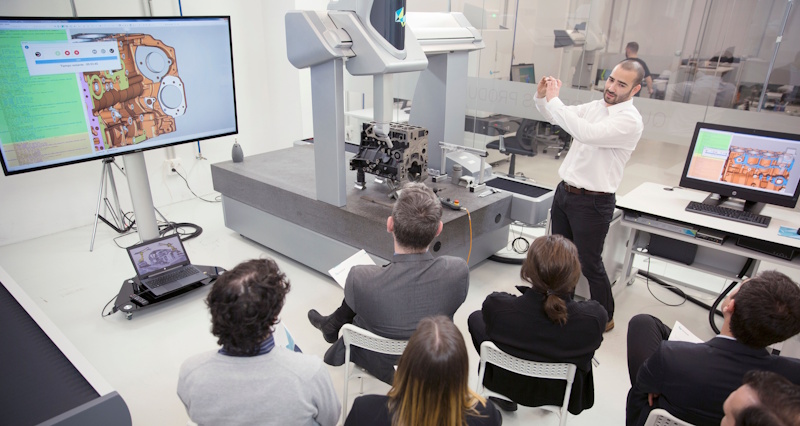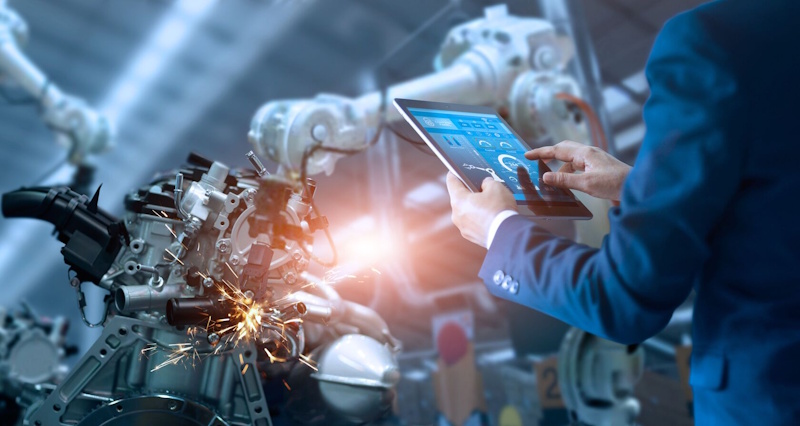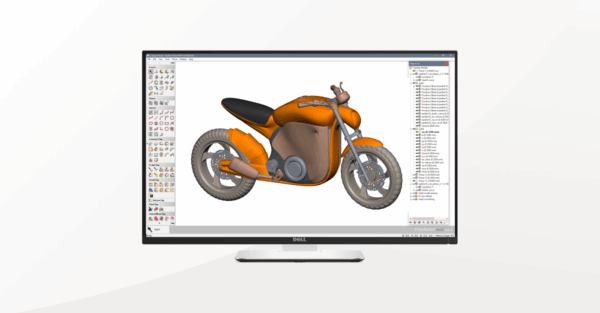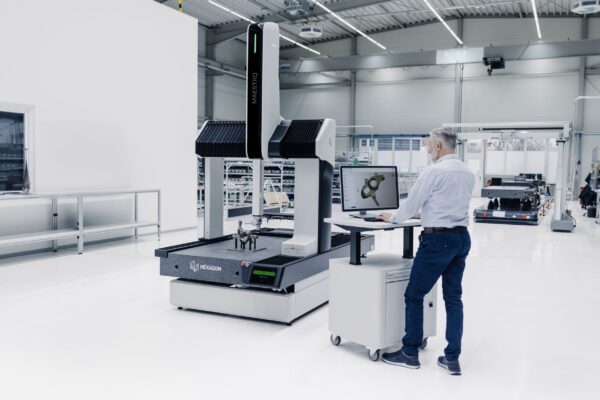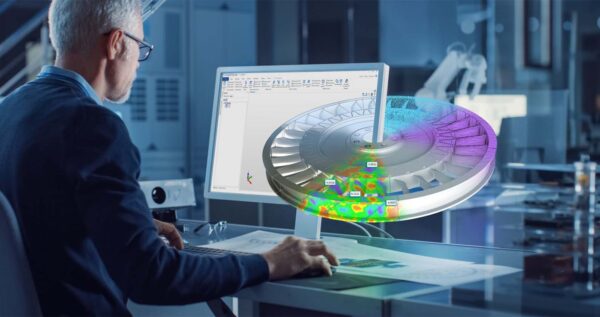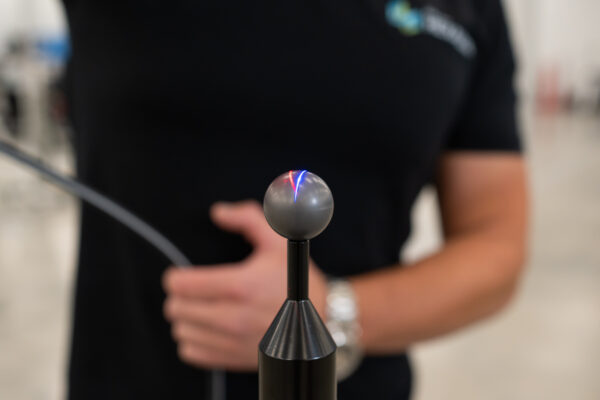The future of metrology in 5 functions
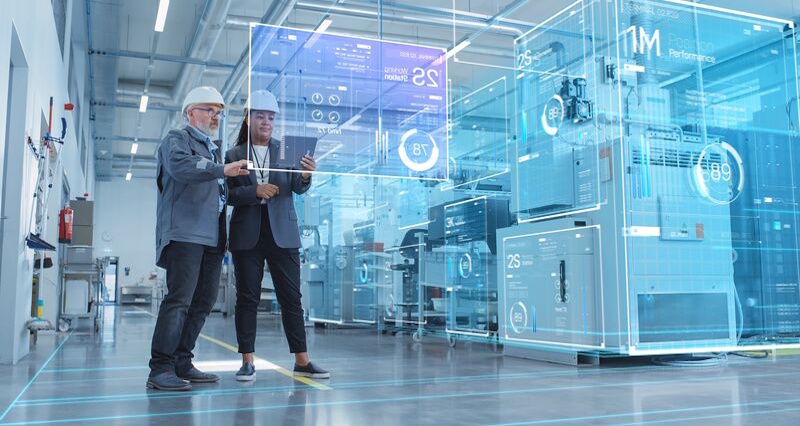
As manufacturing grows and embraces the digital transformation, metrology is changing from traditional quality control methods.
Key drivers like data, connectivity and collaboration are enhancing quality and productivity. With a focus on earlier quality control, metrology teams are becoming central to the entire product lifecycle, using advanced technologies to better integrate design, production, and quality.
In this blog, we take a look at the 5 main areas of change driving the future of metrology and quality inspection.
1. Focus of measurement
The first big change we’re seeing relates to the actual focus of measurement itself. Traditional metrology focuses on dimensional accuracy, surface features or geometrical tolerances. We’re seeing that change and expand as we embrace a growing range of techniques and technologies and continuous improvement in associated metrology software.
At the forefront are non-destructive evaluation (NDE) techniques. Computed Tomography for instance offers the ability to assess internal characteristics and structural integrity without damaging the product or component. This allows for accurate measurement, defect detection and quality assurance without damaging, or effecting the object in anyway. Advances in the laser scanning technology too, with the ability to scan reflective surfaces and capture intricate details have broadened the scope of industrial metrology.
These advances have given us a greater ability to create and use simulations and digital twin technology. Here we have virtual replicas of physical product that allow manufactures to simulate and analyse their behaviour in real life conditions.
2. The role in quality control
In recent years we have seen the scope of metrology expand enormously. It’s gone from verifying product quality at the end of a process to playing a central role throughout the product lifecycle. These days it encompasses design, production and in some cases, even provides feedback during the usable life of a product.
When “quality” means testing to see if a finished product meets specifications, the only logical place for it is at the end of the production line. However, with the advent of connected, increasingly autonomous systems, we can embed metrology throughout the manufacturing process and beyond.
This approach invites us to integrate controls, checks and measures in far more points than was previously possible. With increasingly automated inspection techniques and integrated, connected equipment we’re able to move from an isolated quality control “checkpoint” to a continuous, real-time visibility of every characteristic. In the future we will see AI making more decisions and stepping in to prevent components moving out of tolerance levels at a faster pace and more consistently than a human operator could ever achieve.
In this way, the future of metrology is becoming far more dynamic and exciting. It’s not a room at the end of the process, it’s not a checkpoint, but a holistic approach that actively ensures quality throughout every stage.
3. From tribal knowledge to shared expertise
Another big change we’re seeing in Metrology is a move from key individuals with “tribal knowledge” to a more collaborative approach.
There is a push towards democratising knowledge through collaboration and standardised practices. This helps distribute expertise throughout the organisation in a much broader way that doesn’t leave the company liable to lose skills and abilities if and when key individuals leave the organisation.
Central to this transformation is the emphasis on data quality. High-quality, accurate data is crucial for informed decision-making and effective quality strategies. By adhering to global standards like ASME and ISO, we can ensure consistency. The quality function is increasingly expanding to consider data quality. Reliable data is the foundation for collaboration and shared expertise.
Here is another area where AI is playing a transformational role in various ways. Human expertise is essential, but with AI systems handling routine tasks, this technology can enable experts to focus on more complex and strategic areas. Where knowledge is shared and accessible, manufacturing organisations are less susceptible to changes in the human resource management.
4. From manual to automated processes
The fourth big change we’re seeing is the shift from manual to automated processes. As industries face pressure to deliver products faster and more sustainably, automation offers a solution.
Traditional manual methods are often time-consuming. They can be prone to variability due to human involvement. Automation offers a fix.
Going back to the previous point, with automated, AI supported technologies, we don’t need expert users to operate complex technology like Coordinate Measuring Machines (CMMs). The latest equipment can automatically execute measurement routines from CAD data.
The benefits of this are obvious. It accelerates time-to-market and ensures consistent product quality. Automation enables real-time data analysis by continuously collecting and processing large amounts of data. This supports a new proactive approach to quality management and early issue detection.
In light of recent developments in AI, automated processes are getting smarter and that change will certainly continue. AI systems learn from data, find patterns, adapt to changes and improve over time. All of this allows for more this more dynamic and proactive approach to quality management, which we have already mentioned and will discuss in more detail.
5. A proactive approach to quality management
This is a fundamental change that promises to bring about great benefits, not least of all in terms of sustainability. The idea of wasting an entire batch of product because of a defect is not acceptable in today’s competitive business environment. A proactive approach to quality management avoids this by identifying and resolving issues earlier in the production process.
This proactive approach is broad. It encompasses the entire product lifecycle. Quality by design is a concept that’s been with us for some years now, and it’s become a springboard for further innovations. By embracing a proactive approach to quality from the design stage, we start a “ripple effect” that positively impacts every subsequent phase of the product lifecycle. This ripple effect ensures that potential issues are addressed early, reducing the likelihood of defects and enhancing overall product quality.
Metrology will play a central role in this proactive approach, supporting a shift left strategy where every stage of development and production has a greater visibility and integration of quality considerations. This integration allows for real time monitoring and adjustments, ensuring consistent adherence to quality standards.
AI further enhances this proactive approach by providing predictive and prescriptive insights throughout the product lifecycle. By analysing vast amounts of data, AI can identify patterns and potential issues before they become critical, allowing manufacturers to take corrective action at an early stage. With these insights we can make dynamic adjustments.
As a result, manufacturers reduce waste, improve sustainability and deliver higher-quality products to market faster.
And now we want to hear from you. Do you agree with us? How is metrology and quality inspection changing in your organisation? Share this blog with your networks and lets continue the conversation online.
For quality that touches people's lives
Hexagon’s Manufacturing Intelligence blog is your go-to source for the latest manufacturing thinking. From expert commentary to industry perspectives, it’s designed to empower leaders and professionals to make smarter decisions, drive innovation and turn ideas into impact.


